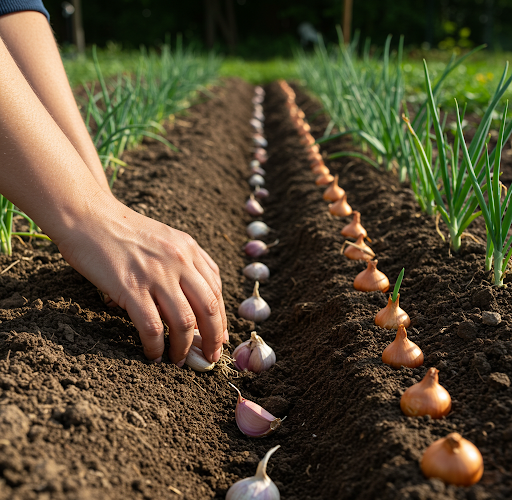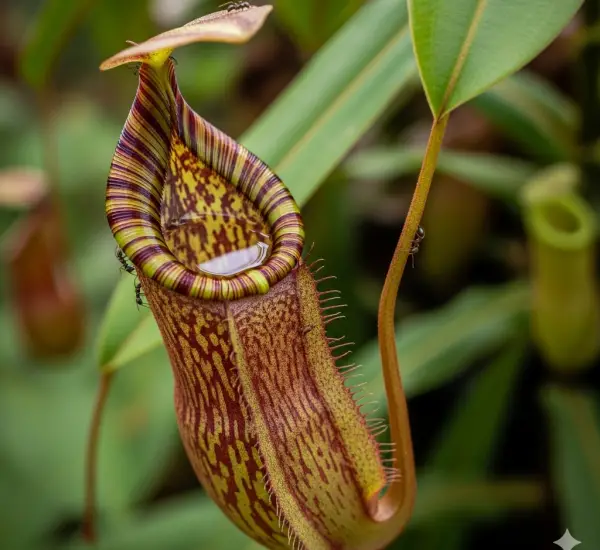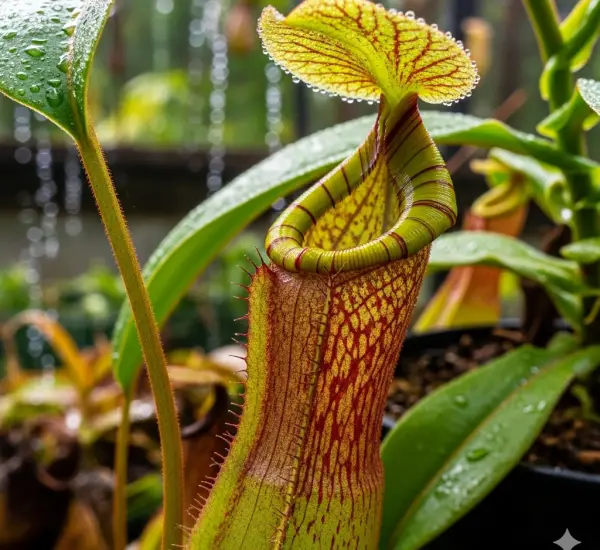How to Successfully Plant Garlic and Protect It from Onion Flies
Garlic is a hardy and resilient plant that can be planted as early as February, provided that the weather conditions allow it. However, before planting garlic, it is essential to take certain precautions to ensure a healthy and productive harvest. While garlic is relatively resistant to pests, there is one particular insect that can significantly reduce yields—the onion fly. This pest is highly destructive to garlic, onions, leeks, and other bulb vegetables. The onion fly closely resembles the common housefly but is smaller in size.
The Dangers of Onion Flies
The presence of onion flies in a garlic field can be devastating. The larvae of this pest feed on garlic bulbs, causing them to rot and deteriorate. One of the first signs of infestation is the yellowing of the leaves. If left untreated, the pest can completely destroy the crop. The problem is further exacerbated by the fact that onion fly larvae can overwinter in the soil, making it essential to take preventive measures before planting.
For gardeners who prefer to avoid chemical pesticides, there are several natural and effective methods to protect garlic and ensure a bountiful harvest. One of the first steps in protecting garlic from onion flies is preparing the cloves properly before planting.
Preparing Garlic for Planting
Before planting garlic, it is crucial to separate the cloves. This process allows you to discard any damaged or small cloves that may not produce a healthy plant. Additionally, if the cloves have already sprouted, there is no need for concern; in fact, sprouted garlic often has an advantage in terms of growth and development.
One effective way to protect garlic from onion flies is to soak the cloves in a saline solution. To prepare this solution, mix 3 tablespoons of salt with 3 liters of water. Stir the mixture until the salt is fully dissolved. Then, place the garlic cloves in the solution, ensuring that they are completely submerged. Stir the mixture to ensure even exposure to the salt water, which helps disinfect the cloves and provide initial protection against onion flies. The garlic should remain in the saline solution for 1 to 2 hours before being removed.
After soaking, the cloves should be left to dry. However, if weather conditions are suitable, the garlic can be planted immediately. This simple yet effective treatment can provide protection against onion flies for a certain period, reducing the risk of infestation.
Alternative Disinfection Methods
For those who prefer other natural treatments, garlic cloves can also be disinfected using alternative solutions, including:
- Strong chamomile tea
- A solution made from wood ash
- A sugar solution
Each of these methods provides some level of protection against pests and diseases, making them viable options for organic gardeners.
Additional Protective Measures After Planting
Once the garlic has been planted, additional protective measures should be taken throughout the growing season. One effective approach is to spray garlic plants with natural solutions as they grow. This helps reinforce the initial protection provided by pre-planting treatments.
Another key strategy is to practice companion planting. Certain plants can repel onion flies and other pests, providing an added layer of defense for garlic crops. Some of the best companion plants for garlic include:
- Carrots
- Celery
- Tomatoes
- Mint
- Chamomile
By planting these crops alongside garlic, gardeners can create a natural barrier against pests, reducing the need for chemical interventions.
The Importance of Crop Rotation
Crop rotation is another crucial practice in pest management. To prevent the buildup of pests and diseases in the soil, garlic should not be planted in the same location every year. Instead, it should be rotated with other crops to break the life cycle of the onion fly and other harmful insects. Ideally, garlic should be planted in a different section of the garden each season to minimize the risk of infestation.
Soil Preparation and Fertilization
Proper soil preparation is essential for growing healthy garlic. Before planting, the soil should be enriched with nutrients to support optimal growth. One effective method is to spread wood ash on the soil, as it serves as a natural deterrent against pests, including onion flies. Additionally, incorporating organic pelleted fertilizer can help improve soil fertility and promote vigorous plant development.
After preparing the soil, a mulch film can be used to cover the planting bed. This technique offers several advantages:
- Weed Suppression: The mulch film prevents weeds from growing, reducing competition for nutrients and moisture.
- Improved Soil Nutrition: By eliminating weeds, all available nutrients in the soil are directed toward the garlic plants.
- Moisture Retention: The mulch film helps retain soil moisture, reducing the need for frequent watering.
When using mulch film, garlic cloves should be planted in holes cut into the foil. This ensures that the plants have access to sunlight and air while benefiting from the protective properties of the mulch film.
Fertilization During Growth
Garlic is a heavy feeder, particularly when it comes to nitrogen. To support healthy growth, supplementation with nitrogen-rich fertilizers will be necessary as the plants develop. It is best to plant garlic in a location where nitrogen-fixing plants, such as legumes, or other nutrient-rich crops like tomatoes and peppers, were grown in the previous season. This practice ensures that the soil has a good supply of nitrogen, which is essential for strong garlic growth.
Final Thoughts
By following these steps, gardeners can successfully grow garlic while protecting it from onion flies and other potential threats. Implementing proper pre-planting treatments, using companion planting, rotating crops, and maintaining soil fertility are all key factors in ensuring a healthy and abundant garlic harvest.
For those who appreciate this information, supporting gardening content by liking, following, and engaging with videos and articles can help spread valuable knowledge to others. Happy gardening!



